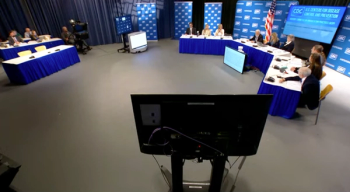
Neglecting Baby Boomer patients could have a high price
New research suggests that just because patients like their provider doesn't mean they will stay with the practice
New research suggests that just because patients like their provider doesn’t mean they will stay with the practice. And it isn’t just more-demanding millennials who are switching. Loyal, long-term baby boomer patients are looking for a better experience elsewhere.
For years, providers have thought that patients generally left a practice only for a couple of reasons: changes in insurance or a personal move to a new location. Times have changed, and the
Last year, one in eight patients left their primary care provider, and nearly 40% said it was because of service and experience. Specifically, they identified issues like dissatisfaction with the office staff, poor communication, feeling more like a number than a person, and difficulty with scheduling.
TRENDING ON OUR SITE:
When patients were asked if they were considering leaving their provider in the next two years, about one in three said they were. When broken out by generation, millennials were the most likely to be thinking about switching, but even boomers were at risk. Twenty percent of baby boomers said they were at least considering switching primary care providers.
So when it comes to baby boomers, what do practices need to do to help ensure they stay loyal? It might be surprising to hear that much of what practices need to do to retain boomers is the same as what they need to do to retain younger generations.
There has long been a myth that baby boomers are slow to adopt technology and don’t use the internet, smart phones, or social media. The Patient Provider Relationship Study found this isn’t true. And that study is supported by other surveys conducted by groups like
Practices need to make some basic changes in the way they connect with and engage their boomer patients if they want to retain them successfully:
1. Offer communication options. Don’t assume all baby boomers want a phone call. Many now would prefer to receive an email or text. Seventy-four percent of patients age 50-64 have a smartphone, and nearly 90% use the Internet according to Pew. With the right technology you can set their preference for text, email, or phone as well as how often they want to receive reminders and other communications. These messages can be automated, reducing phone calls for staff while decreasing no-shows.
2. Enhance digital access. All patients will appreciate the ability to schedule online, pay bills electronically, receive timely and relevant educational materials and engage through social media. Much of this can be automated, improving customer experience without adding work for staff.
3. Customize and personalize. Again, ask patients about preferences for reminders and other communications. But also consider customizing communications based on factors like age, diagnosis, etc. Relevant, timely communications are more likely to be read.
4. Make more face time for patients. Over
Understanding what boomers and other patients want is the first step in improving their experience and building loyalty. It’s more than patient engagement. It’s about implementing tools patients want that simplify processes and save time for everyone, allowing them more time to connect face-to-face.
POPULAR ONLINE:
Josh Weiner is chief operating officer of Solutionreach.
Newsletter
Stay informed and empowered with Medical Economics enewsletter, delivering expert insights, financial strategies, practice management tips and technology trends — tailored for today’s physicians.















